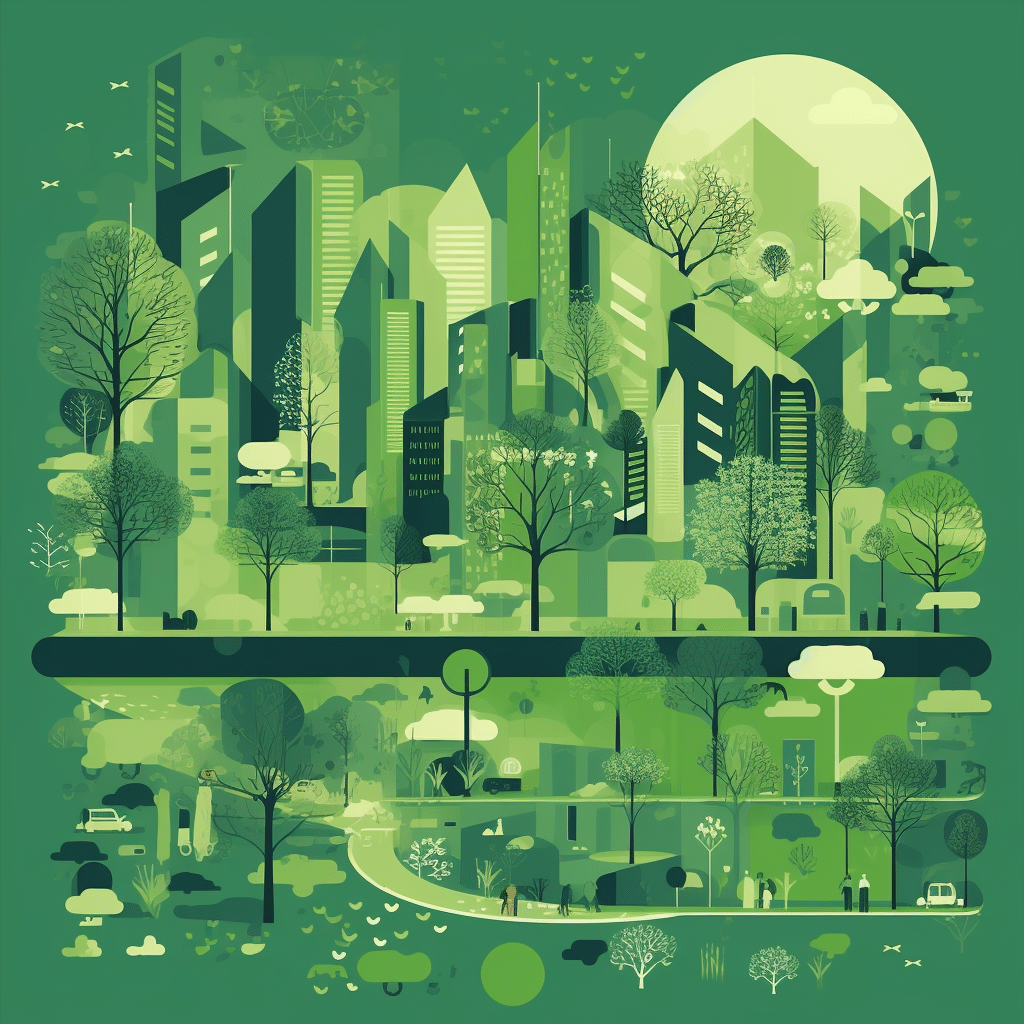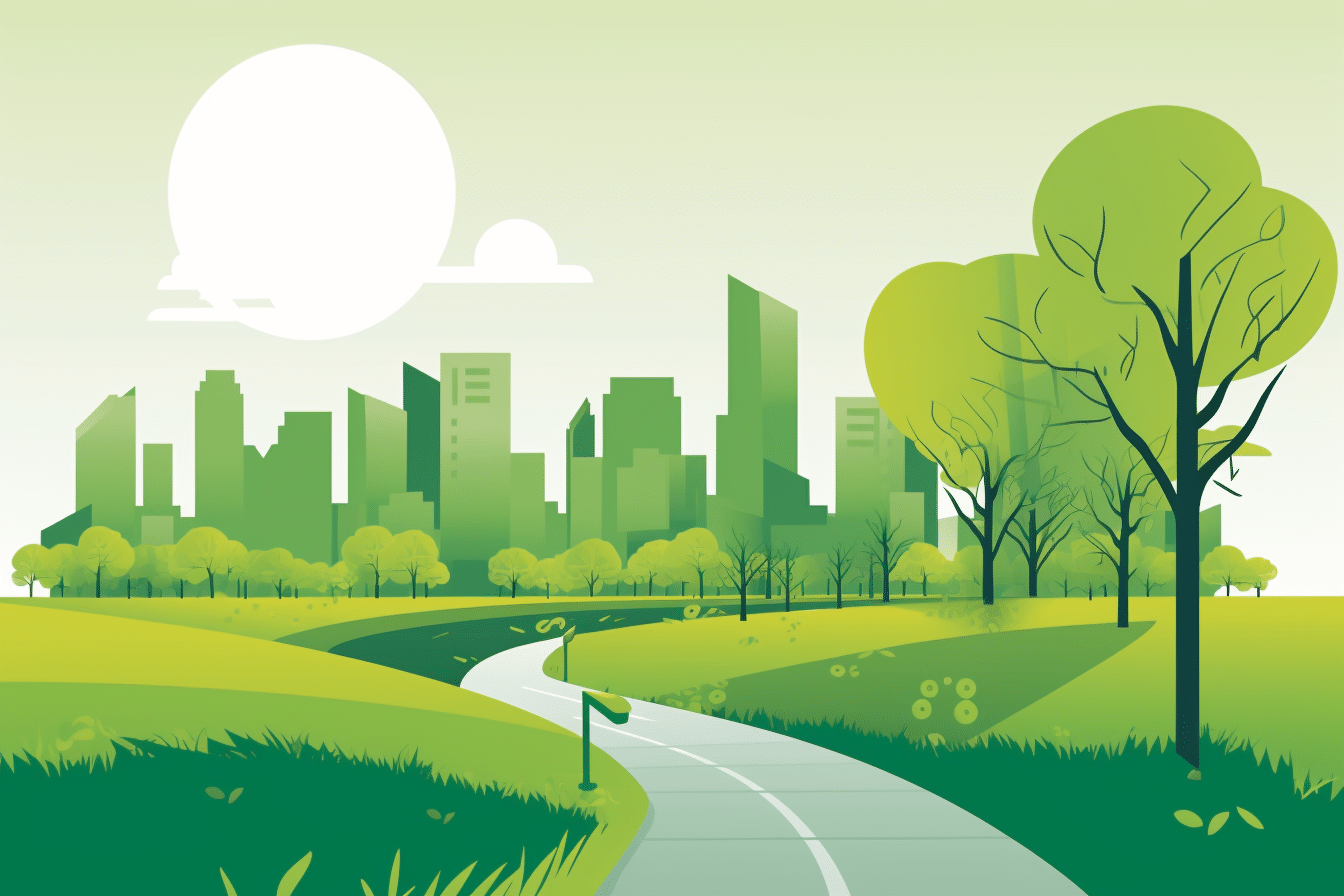The rise of green urbanism has captured the attention of city planners, architects, and citizens alike. As the world grapples with the challenging nature of modern urban living, such as overcrowding, pollution, and climate change, green urbanism offers a sustainable and innovative approach to city planning and design.
The Concept of Green Urbanism
It’s an integrative approach to urban planning that emphasizes ecological sustainability, social equity, and high quality of life. The principles of green urbanism include reducing environmental impacts, promoting resource efficiency, and fostering a sense of community. In contrast to traditional urban planning, which often prioritizes economic growth at the expense of the environment, green urbanism aims to balance ecological concerns with human well-being.
The Benefits of Green Urbanism
Healthier living environments are a crucial outcome of green urbanism, as it encourage the creation of green spaces, improved air quality, and reduced noise pollution. Biodiversity and ecosystem services also thrive in green urban settings, supporting pollinators, carbon sequestration, and natural temperature regulation. In addition, sustainable resource management ensures that cities are more energy and water-efficient, while economic benefits include job creation in sectors like renewable energy, sustainable agriculture, and green building.

Incorporating Green Spaces in Urban Planning
Parks and gardens are the backbones of green urbanism, providing recreational spaces and promoting mental well-being. Green roofs and walls enhance aesthetics and reduce the urban heat island effect, improving air quality. Urban agriculture and community gardens foster local food production and strengthen social connections, while pocket parks and micro-green spaces offer creative solutions for urban greening in densely populated areas.
Embracing a Sustainable Future: Your Guide to Green Urbanism (FAQs)
Green Urbanism refers to creating communities beneficial to humans and the environment. It’s an integrative approach that focuses on harmonizing cities with nature, promoting sustainable living, and reducing ecological footprints. This concept encompasses energy-efficient buildings and green spaces to sustainable transportation and waste management systems.
The concept transforms city living by creating healthier, more sustainable environments. Residents can enjoy cleaner air due to reduced pollution, more green recreational spaces, and a stronger sense of community through shared sustainable practices. It also often leads to economic benefits like lower energy costs and increased property values while contributing positively to the planet.
Key features of Green Urban design include using renewable energy sources like solar and wind power, energy-efficient building designs, extensive public green spaces like parks and gardens, sustainable transportation options like biking and public transit, and infrastructure that supports recycling and reduces waste. Additionally, green urban design often incorporates water conservation techniques and urban agriculture initiatives.
Individuals can contribute to in several ways. This includes adopting sustainable practices like recycling, using public transport, and conserving energy at home. Residents can also participate in local urban gardening projects, advocate for green policies in their community, and support local businesses that practice sustainability. Every small step can significantly impact making cities greener and more livable.
Sustainable Transportation Solutions
The idea emphasizes public transportation, making it more accessible and efficient while promoting bike and pedestrian-friendly infrastructure. Electric vehicle charging networks facilitate the transition to cleaner transport, and car-free zones and car-sharing programs reduce congestion and air pollution.
Green Building and Architecture
Following standards like LEED and Passive House, energy-efficient buildings minimize energy consumption and environmental impact. Green building materials and emerging technologies, such as solar panels, green roofs, and natural ventilation, further enhance sustainability. Adaptive reuse and historic preservation maintain the cultural heritage of a city while reducing waste and conserving resources.
Water Management in Green Urbanism
Rainwater harvesting systems capture and store precipitation for later use, reducing the strain on city water supplies. Permeable surfaces and stormwater management techniques mitigate flooding and prevent water pollution. Greywater recycling and wastewater treatment systems promote water conservation and minimize pollution.
Waste Management and the Circular Economy
Recycling and composting programs reduce waste sent to landfills and promote a circular economy where materials are reused and repurposed. Zero-waste initiatives encourage waste reduction at the source, while material recovery facilities and waste-to-energy plants convert waste into valuable resources or energy.
Community Involvement and Education
The concept thrives as a grassroots movement, empowering local communities to take charge of their neighborhoods and drive sustainable change. Environmental education and awareness campaigns cultivate a sense of ecological responsibility and foster the adoption of sustainable practices.
Case Studies: Green Urbanism in Action
Singapore, known as “A City in a Garden,” exemplifies the power of green urbanism through its extensive green spaces, vertical gardens, and innovative water management strategies.
Singapore is exploding with biodiverse green spaces, which add excitement to daily living while focusing on sustainability. All the plants also provide a beautiful aesthetic that travelers and locals admire.
Copenhagen, a bicycle-friendly metropolis, has prioritized cycling infrastructure, public transportation, and renewable energy. Since 2015, they have been the number one bike-friendly city, and that’s not likely to end soon.
Freiburg, Germany, is renowned for its sustainable city model, featuring energy-efficient housing, extensive public transit, and green spaces. Freiburg is a place where the past and future connect.

Innovation Continues
The future of green urbanism lies in embracing innovative solutions, scaling successful models, and fostering collaboration among diverse stakeholders. As we navigate the complexities of urban living in a rapidly changing world, green urbanism
Updated 12/01/2023





